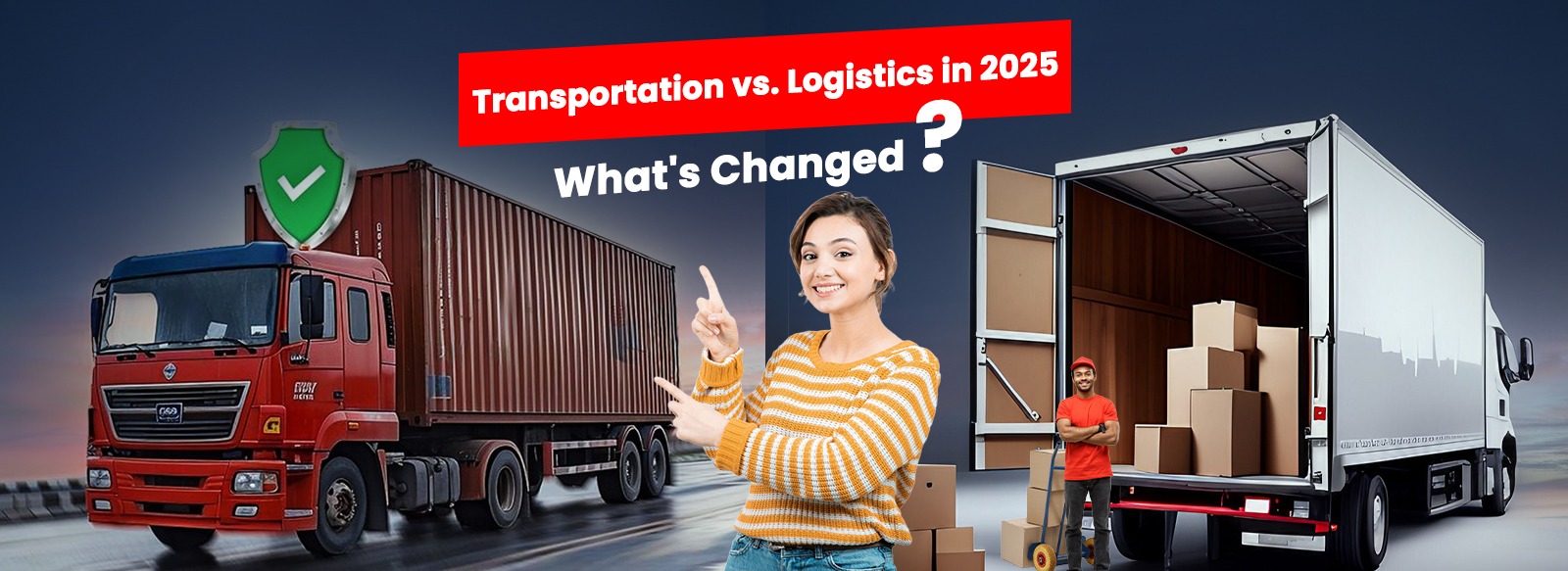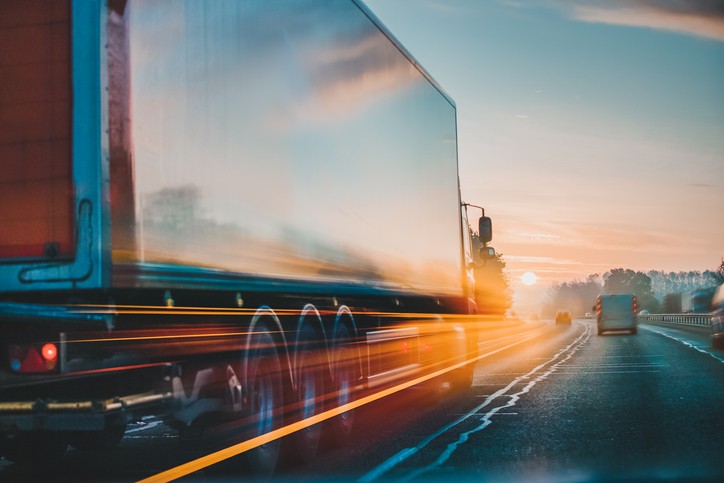Transportation vs. Logistics in 2025: What's Changed?
In today’s fast-paced world, the terms "transportation" and "logistics" are often used together, but they mean different things. Both are essential for getting goods and services from one place to another, but they play different roles in the process. Over the years, technology, changing customer needs, and global trends have transformed how transportation and logistics work. This article will explain the difference between the two, their pros and cons, why they’re important, and the various types that exist. By the end, you’ll have a clear understanding of how these fields keep the world moving.
What Are Transportation and Logistics?
Let’s start with the basics. Transportation is all about moving goods or people from one place to another. It involves using vehicles like trucks, trains, ships, or planes to physically transport items. For example, when you order a package online, transportation is what gets it from the warehouse to your doorstep.
Logistics, on the other hand, is a bigger picture. It includes transportation but also involves planning, organizing, and managing the entire process of getting goods from the producer to the consumer. This means handling things like inventory, storage, packaging, and even customer service. In short, logistics makes sure everything runs smoothly from start to finish.
What’s the Difference Between Logistics and Transportation?
Logistics and transportation are often used interchangeably, but they serve distinct roles in supply chain management. Transportation refers specifically to the movement of goods or people from one location to another using vehicles, ships, planes, or trains. It is a subset of logistics. Logistics, on the other hand, encompasses a broader scope, including transportation, warehousing, inventory management, packaging, and distribution. It focuses on planning, executing, and optimizing the entire flow of goods to meet customer demands efficiently. While transportation is about moving products, logistics ensures the right product reaches the right place at the right time.
Pros and Cons of Transportation and Logistics
Both transportation and logistics have their strengths and challenges. Let’s break them down.
Pros of Transportation
- Speed and Efficiency: Modern transportation systems can move goods quickly, even over long distances.
- Accessibility: It connects cities, towns, and remote areas, making sure goods are available everywhere.
- Supports Trade: Transportation is the backbone of global trade, helping businesses reach customers worldwide.
- Flexibility: There are many options—road, rail, air, and sea—so businesses can choose what works best.
Cons of Transportation
- Environmental Impact: Vehicles produce pollution and greenhouse gases, which harm the environment.
- High Costs: Fuel, maintenance, and labor can make transportation expensive.
- Traffic and Delays: Congestion on roads or at ports can slow things down.
- Dependence on Infrastructure: Poor roads or outdated ports can cause problems.
Pros of Logistics
- Smooth Operations: Logistics ensures everything in the supply chain works together seamlessly.
- Cost Savings: Good logistics reduces waste and saves money by optimizing resources.
- Happy Customers: When orders arrive on time and in good condition, customers are satisfied.
- Data-Driven Decisions: Modern logistics uses technology to make smarter, faster decisions.
Cons of Logistics
- Complexity: Managing all the moving parts of logistics can be challenging.
- Expensive to Set Up: Advanced logistics systems require a lot of investment.
- Reliance on Technology: If systems fail, it can disrupt the entire process.
- Risk Management: Logistics has to deal with risks like theft, damage, or delays.
Why Are Logistics and Transportation Important?
Both are crucial for the global economy and our daily lives. Here’s why:
- Global Trade: They make it possible to move goods across countries and continents, supporting international business.
- Efficient Supply Chains: Without logistics and transportation, businesses wouldn’t be able to deliver products on time.
- Customer Satisfaction: Fast and reliable delivery keeps customers happy and builds trust.
- Economic Growth: They create jobs, support businesses, and help economies grow.
- Emergency Response: During disasters, logistics and transportation deliver essential supplies like food, water, and medicine.
Types of Logistics and Transportation
There are different types of logistics and transportation, each serving a specific purpose. Let’s take a closer look.
Types of Logistics
- Inbound Logistics: This involves bringing raw materials or supplies into a business. For example, a car manufacturer needs steel and rubber to build cars.
- Outbound Logistics: This is about sending finished products to customers or retailers. For example, delivering smartphones to stores.
- Reverse Logistics: This handles returns, repairs, or recycling. For example, when a customer returns a defective product.
- Third-Party Logistics (3PL): This is when a company outsources its logistics to a specialized provider. For example, an online store using a fulfillment center.
- Fourth-Party Logistics (4PL): This is a step above 3PL, where a company manages the entire supply chain for another business.
Types of Transportation
- Road Transportation: The most common type, using trucks, vans, and cars. It’s great for short to medium distances.
- Rail Transportation: Ideal for heavy goods and long distances. It’s cost-effective and can carry large loads.
- Air Transportation: The fastest option, perfect for perishable or high-value items like electronics or flowers.
- Maritime Transportation: Used for international trade, especially for bulky items like oil, machinery, or containers.
- Pipeline Transportation: Mainly for liquids and gases, such as oil, natural gas, or water.
How Technology Is Changing the Game
Technology is transforming both transportation and logistics. Here are some of the biggest trends:
- Automation: Self-driving trucks, delivery drones, and robotic warehouses are becoming more common. They reduce human error and speed up processes.
- Artificial Intelligence (AI): AI helps predict demand, optimize routes, and make smarter decisions.
- Blockchain: This technology ensures transparency and security in supply chain transactions.
- Internet of Things (IoT): IoT devices, like GPS trackers, provide real-time data on shipments, helping companies monitor and manage their goods.
- Sustainability: Electric vehicles and eco-friendly practices are reducing the environmental impact of transportation and logistics.
Transportation Services: A Key Part of Logistics
Transportation services are a vital piece of the logistics puzzle. They include things like freight forwarding, courier services, and last-mile delivery (the final step of getting a package to your door). With the rise of online shopping, the demand for reliable Transportation Services has grown massively. Companies are now using advanced tools like route optimization software and real-time tracking to make their transportation services faster and more efficient.
Conclusion
Transportation and logistics are the backbone of how goods and services move around the world. While transportation focuses on the physical movement of items, logistics covers the bigger picture, including planning, coordination, and management. Both have their pros and cons, but they’re essential for keeping the global economy running.
As technology continues to advance, transportation and logistics will become even more efficient and sustainable. From self-driving trucks to AI-powered systems, these innovations are shaping the future of how we move goods. By understanding the differences, types, and importance of transportation and logistics, businesses can stay ahead in a competitive market.
In a world that’s more connected than ever, the partnership between transportation and logistics ensures that goods reach their destinations quickly, safely, and efficiently. Whether it’s a small package delivered to your home or a shipment of goods crossing the ocean, these two fields work together to keep the world moving forward.



